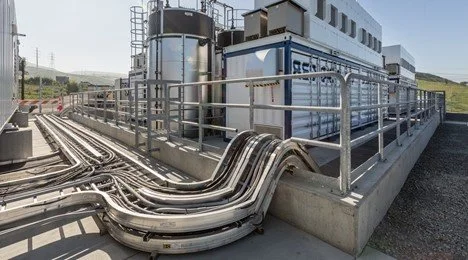SDG&E and Sumitomo Electric Complete Zero-Emissions Microgrid Pilot Project
Source: · T&D WORLD · | February 3, 2022
Project successfully powered utility customers solely with energy stored in a flow battery.
Source: T&D World
In support of California’s goals for 100% carbon-free electricity, grid reliability and climate resilience, San Diego Gas & Electric (SDG&E) and Sumitomo Electric (SEI) undertook and successfully completed a zero-emissions microgrid pilot project using a vanadium redox flow (VRF) battery – the first of its kind to be connected to the state’s energy market in 2018.
Developing zero-emissions microgrids powered with long-duration energy storage has become a top priority for California, as growing wildfire risks have led to more frequent use of Public Safety Power Shutoffs (PSPS). Microgrids are mini power grids that can operate independently of the larger grid and keep critical facilities powered during emergencies and PSPS.
In one of the test runs, the 2MW/8MWh VRF battery — functioning as part of a microgrid — powered 66 residential and commercial customers for close to five hours.
“Climate conditions increasingly threaten the continuity of essential services that our customers expect and deserve from us, which is one of the many reasons we are so focused on innovation and technology,” said Caroline Winn, CEO, SDG&E. “There is a critical need to develop breakthrough solutions like zero-emissions microgrids to not only minimize disruptions, but to also support the transition to a cleaner, safer and more reliable energy grid of the future.”
Different from more prevalent stacked lithium-ion battery cells, VRF batteries consist of tanks of liquid electrolytes and pumps that charge and discharge electrons to the grid. During the pilot, the batteries charged when solar energy was abundant and discharged during peak hours to meet demand.

